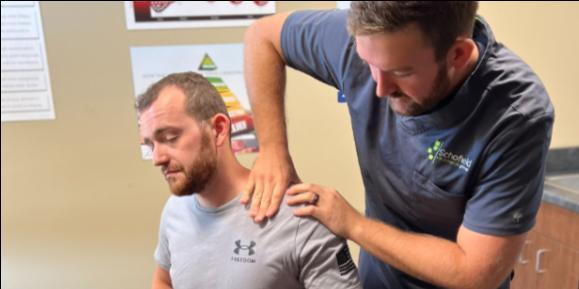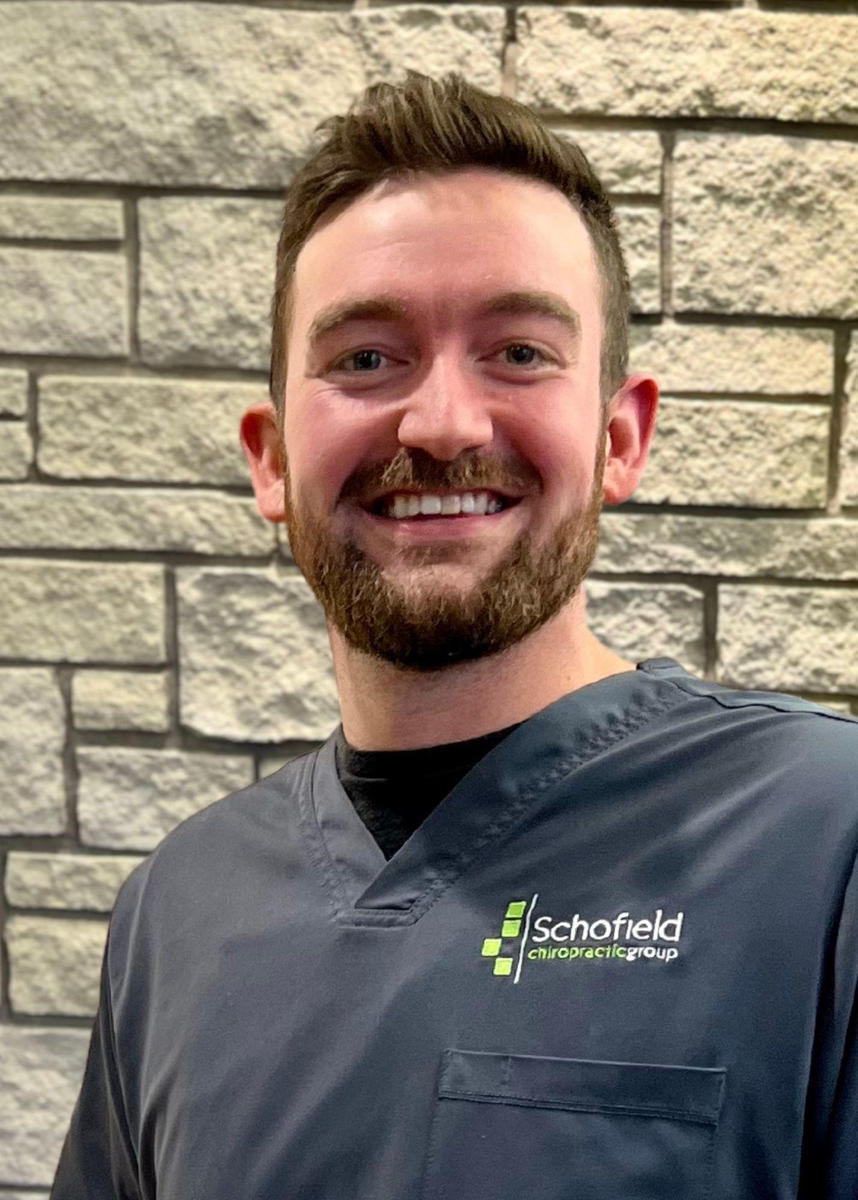A New Certification In My ART Journey

- posted: Jun. 05, 2024
I recently had the opportunity to attend a seminar in New York to further my Active Release Technique. I have previously been certified for the upper extremity portion which is geared to focus on shoulders, elbows, forearms, wrists, and hands. I am happy to announce that I am now certified in ART for the Spine! Based on my experience in learning the protocols for upper extremity and how well it has translated into real world patient care, I knew ART was something that I wanted to expand to other areas of the body as well. What I didn’t expect is how much I took away from the course. As a chiropractor, our focus is often spine first. Our spine is the foundation of our movement, stability, nervous system protection, and can be the root cause of movement imbalances that contribute to pain. Both clinical experience and research have long observed connections between movement issues at the spinal level and things like upper and lower extremity pain and referred pain to other areas of the body as the body compensates.
Moving through the ART coursework for the spine was like constantly having lightbulbs turned on. Many times I would recall my time in practice thinking about:
- Strange positions patients would get into to show me what hurt.
- People with persistent pain that felt like they just needed something different.
- Patients with complicated injuries in their past that feel like if they could just get past that their other issues would improve or not come around as much.
- Pain that was in odd patterns or spanned over large areas.
During the process, the instructors take you through every muscle and many problematic ligaments along the spine starting at the head and jaw and going down to the base of your spine layer by layer. By the end it felt like I had my eyes opened to a new side of how our body functions, the job of the specific muscles as it relates to movement, and most importantly a protocol for how to treat it!
ART in short, is a treatment for muscular issues that arise from tear/crush, overuse, or compensation injuries. Our body does its best to heal from injuries and it has the equipment to do so. We have cells in our body that respond to inflammation after an injury and begin the healing process. During that time our body must lay down a network of myofibrils and connective tissue which can act as an internal cast of sorts to prevent further damage and allow your body to replace the injured tissue with healthy tissue. In many cases the muscle is not as stretchy or pliable after the injury due to remaining adhesion in the muscle causing a change in the amount of work the muscle has to do to achieve the same task. If your muscles fire harder than necessary over and over, either pain or our nervous system will recruit other muscles in the area to “help out”, creating a change in your movement pattern. Left uncorrected, this can lead to pain in this area or other areas of the body well after the initial injury has occurred. ART works to improve the gliding of the muscle fibers to get it moving more freely and help it heal on a cellular level.
Another benefit of ART is that it can be used in an area that may be too sensitive for chiropractic treatment, such as a surgical site. When practicing ART, I use my hands, coupled with your own movements in specific directions, to fully shorten and lengthen the tissue, meaning you are in control of your comfort level, and can give feedback as we go.

Dr. Conrad Bush is a graduate of Palmer College of Chiropractic. He has special interests in weight loss, biomechanics, extremities, and sports rehab. He is certified in Active Release Technique, which focuses on treating the soft tissue system of the body.

- posted: Jun. 05, 2024
I recently had the opportunity to attend a seminar in New York to further my Active Release Technique. I have previously been certified for the upper extremity portion which is geared to focus on shoulders, elbows, forearms, wrists, and hands. I am happy to announce that I am now certified in ART for the Spine! Based on my experience in learning the protocols for upper extremity and how well it has translated into real world patient care, I knew ART was something that I wanted to expand to other areas of the body as well. What I didn’t expect is how much I took away from the course. As a chiropractor, our focus is often spine first. Our spine is the foundation of our movement, stability, nervous system protection, and can be the root cause of movement imbalances that contribute to pain. Both clinical experience and research have long observed connections between movement issues at the spinal level and things like upper and lower extremity pain and referred pain to other areas of the body as the body compensates.
Moving through the ART coursework for the spine was like constantly having lightbulbs turned on. Many times I would recall my time in practice thinking about:
- Strange positions patients would get into to show me what hurt.
- People with persistent pain that felt like they just needed something different.
- Patients with complicated injuries in their past that feel like if they could just get past that their other issues would improve or not come around as much.
- Pain that was in odd patterns or spanned over large areas.
During the process, the instructors take you through every muscle and many problematic ligaments along the spine starting at the head and jaw and going down to the base of your spine layer by layer. By the end it felt like I had my eyes opened to a new side of how our body functions, the job of the specific muscles as it relates to movement, and most importantly a protocol for how to treat it!
ART in short, is a treatment for muscular issues that arise from tear/crush, overuse, or compensation injuries. Our body does its best to heal from injuries and it has the equipment to do so. We have cells in our body that respond to inflammation after an injury and begin the healing process. During that time our body must lay down a network of myofibrils and connective tissue which can act as an internal cast of sorts to prevent further damage and allow your body to replace the injured tissue with healthy tissue. In many cases the muscle is not as stretchy or pliable after the injury due to remaining adhesion in the muscle causing a change in the amount of work the muscle has to do to achieve the same task. If your muscles fire harder than necessary over and over, either pain or our nervous system will recruit other muscles in the area to “help out”, creating a change in your movement pattern. Left uncorrected, this can lead to pain in this area or other areas of the body well after the initial injury has occurred. ART works to improve the gliding of the muscle fibers to get it moving more freely and help it heal on a cellular level.
Another benefit of ART is that it can be used in an area that may be too sensitive for chiropractic treatment, such as a surgical site. When practicing ART, I use my hands, coupled with your own movements in specific directions, to fully shorten and lengthen the tissue, meaning you are in control of your comfort level, and can give feedback as we go.

Dr. Conrad Bush is a graduate of Palmer College of Chiropractic. He has special interests in weight loss, biomechanics, extremities, and sports rehab. He is certified in Active Release Technique, which focuses on treating the soft tissue system of the body.
1001 Hudson Rd., Ste. A
Cedar Falls, IA, 50613
